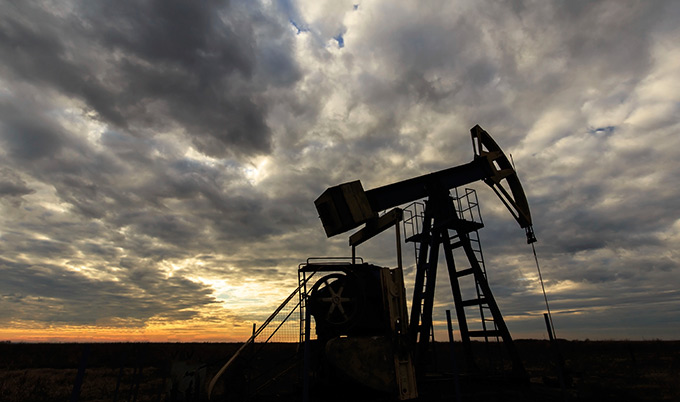Fracking traffic
Traffic-related impact of fracking revealed
Published on: 24 February 2016
New models suggest the traffic-related impact of hydraulic fracking could result in a 30% increase in emissions.
Researchers at Newcastle University, as part of the ReFINE (Research Fracking in Europe) consortium, have today unveiled a new Traffic Impacts Model (TIM) for assessing the traffic-related impact of hydraulic fracturing (fracking) operations.
Applying hypothetical scenarios, the model shows that a single well can create substantial increases in local air quality pollutants, primarily due to the delivery of water and materials to the site. At peak times nitrogen oxide and dioxide (NOx) emissions showed increases of 30% over non-fracking periods and noise levels doubled.
Published today in the journal Environment International, the research is also being presented at the Examining Policy Drivers & Practical Solutions to Mitigate & Manage the Environmental & Geo-Technical Impacts of Shale and Unconventional Gas Exploration & Production conference in London.

Understanding the traffic impact
Dr Paul Goodman, Researcher in Transport and the Environment at Newcastle University and lead author on the report, said:
"Additional road traffic would primarily be heavy duty vehicles such as tankers bringing the water required for the fracturing process to and from the well site.
"As well as being highly visible, the presence of tankers on roads has a number of environmental impacts: on greenhouse gas emissions, local air quality issues such as NOx emissions and particulate matter, noise and damage to road surface and structure.
"While traffic might not be the immediate thing that springs to mind when considering fracking operations, it is important to understand what the traffic impacts might be and consider how these could be mitigated."
Emissions could increase by 30% at peak times
TIM found that for a hypothetical scenario of a six-well site, developed over an 85-week period and serviced by a rural road network, the default assumptions on tanker requirements led to a 6% increase in NOx emissions, a 5% increase in CO2 emissions and a 17% increase in axle loading on the roads. However, at peak times, hourly NOx emissions increased by 30% and noise levels by 3.4dBA. In contrast, for the same six-well site scenario serviced by motorway and high-capacity trunk roads, the increases for all pollutants and axle loading were below 0.5% over the 85-week period.
The team at Newcastle also used TIM to assess hypothetical large-scale developments in the UK, from a low estimate of 190 wells to an ultra-high estimate of 2970 wells developed from 2015-2050.
Based on the assumption of 100% of incoming water demand met by tankers travelling a 60km round trip, the additional CO2 emissions produced from road transport ranged from 6.6kT (kilo tonnes) to 109kT over the 35 year period. If 50% of these wells were 're-fractured' after 5 years of operation to stimulate further gas production, the CO2 emissions were found to increase by 9.7kT to 160kT over the same period.
However, if 90% of incoming water demand was met by pipeline, the additional CO2 emissions would drop to between 2.3kT and 63.2kT over the same 35 year period. This compares to present day emissions of around 130kT of CO2 generated by traffic in a typical UK market town with a population of around 70,000. Taking account of technological improvements to vehicles, this suggests that the town would produce 20 times more CO2 over the same 35 year period than the most aggressive hypothetical fracking adoption scenario looked at by the team.
Understanding the impact ahead of any decision around fracking in the UK
Dr Neil Thorpe, who is leading the transport team on fracking at Newcastle University and co-authored the report, said:
"The findings suggest that while the traffic related to activities at a single well site is unlikely to cause significant changes to long-term averages of air quality, it has potential to cause short-term peaks, especially for NOx.
"However, there are ways to mitigate this. Using pipelines, rather than tankers, to transport water to and from well sites could reduce the traffic-related impact of fracking. Another option is to look at how the tankers are fuelled. Widespread use of compressed natural gas or future fuel technologies such as hydrogen would further mitigate greenhouse gas impacts.
"Fracking involves many different inter-dependent processes, and as the industry matures the presence of multiple operators, multiple wells on a site and multiple sites within one region may complicate and compound traffic issues. This is why it is important to understand the possible impacts now.
"To date we have used hypothetical fracking scenarios to quantify changes against baseline levels, but if test and production wells are given the go-ahead we hope our model can be used as a decision-support tool by governments, local authorities and companies to provide more accurate assessments of the traffic impact of fracking."
Reference: Investigating the Traffic-related Environmental Impacts of Hydraulic-fracturing (Fracking) Operations. Paul S. Goodman, Fabio Galatioto, Neil Thorpe*, Anil K. Namdeo, Richard J. Davies, Roger N. Bird. Environment International Feb 24, 2016
Conference: Examining Policy Drivers & Practical Solutions to Mitigate & Manage the Environmental & Geo-Technical Impacts of Shale and Unconventional Gas Exploration & Production.



